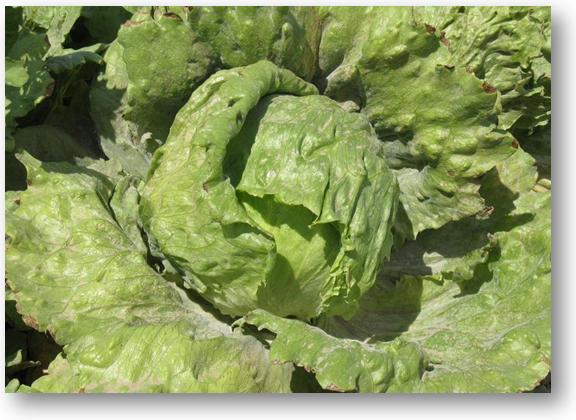 |
|
|
|

|
|||
| |
|||
The final stretch of this lettuce production season in the desert southwest is upon us. This is also the time of year when powdery mildew can be an economic concern in lettuce fields. This disease, caused by the fungus Golovinomyces cichoracearum, can become prominent on lettuce plants at or nearing maturity. The disease is first observed as very small spots of white fungal growth on upper and lower leaf surfaces of the oldest leaves. From these initial infection sites, the fungus continues to grow on the leaf surface and releases vast quantities of spores which are carried in the air, which upon landing on lettuce leaves initiate additional infections under favorable temperature and moisture conditions. The most favorable temperature range for spore germination is 65 to 77 °F. Relative humidity at or above 85% is required for infection, growth and sporulation by the pathogen. Low light intensity also favors powdery mildew development. These requirements are often all met for one to several hours daily, especially on lettuce leaves near or at the soil surface in a maturing lettuce planting. As little as 4 days are needed from infection to production of a new crop of pathogen spores. Depending on environmental conditions and the particular susceptibility of the lettuce variety being grown, preventative applications of fungicides may be needed to prevent economic loss to the crop. The oldest leaves where initial powdery mildew infections develop will not be harvested; however, these leaves serve as factories for spore production and launching sites for spore release, which can lead to infection of the marketable portion of the lettuce plant. In recent field trials, fungicides that provided excellent control of powdery mildew on lettuce included Microthiol Disperss (wettable sulfur), Procure (triflumizole), Quintec (quinoxyfen), and Rally (myclobutanil). Initiating fungicide treatments before or at the very latest at the first sign of infection on the oldest leaves will result in the best levels of disease control.
To contact Mike Matheron go to: matheron@ag.arizona.edu.
|
|||
| Back | |||
For questions or comments on any of the topics please contact Marco Pena at the Yuma Agricultural Center. |
|||
| Home | Cotton
| Veggies | Forages
| Grains | Citrus
| Crop x Crop Insects | Diseases| Weeds | Pesticides | Economics | News | Weather | Research | Photos | Contacts | General Info. Copyright © 2001 University of Arizona, College of Agriculture and Life Sciences Webmaster: Al Fournier (acis@ag.arizona.edu) |
|||
